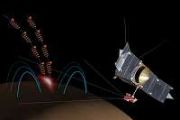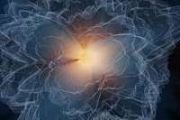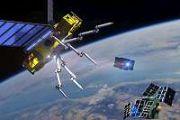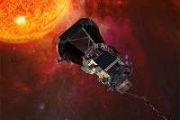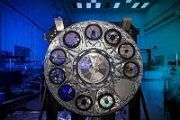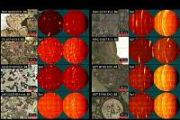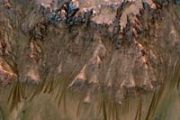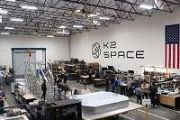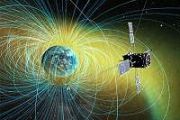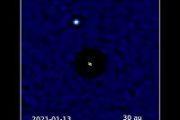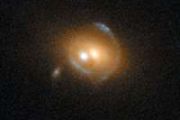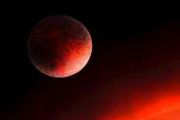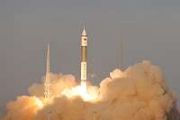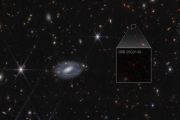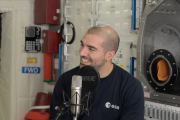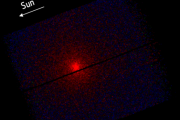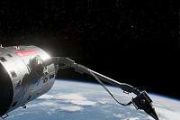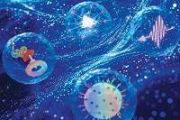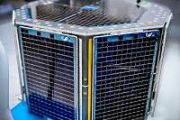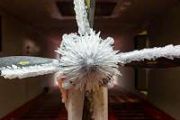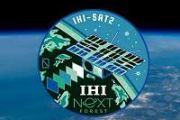
Copernical Team
Bible 1.0: How Ancient Canon Became Our First Large Language Models
 Modern large language models are treated as something radically new: vast statistical machines trained on almost everything humans have written, and able to regenerate knowledge on demand. Yet in structural terms, humanity has worked with something similar for millennia.
Modern large language models are treated as something radically new: vast statistical machines trained on almost everything humans have written, and able to regenerate knowledge on demand. Yet in structural terms, humanity has worked with something similar for millennia. China launches carrier rocket to deploy experimental cargo ship and satellite
 China launched a Kuaizhou 11 carrier rocket on Saturday morning to deploy a privately developed experimental cargo ship and a satellite into space.
The rocket blasted off at 9:08 am at the Jiuquan Space Launch Center in the Inner Mongolia autonomous region and soon placed the DEAR 5 ship and the Xiwang 5B satellite into their preset orbital position, according to China Aerospace Science an
China launched a Kuaizhou 11 carrier rocket on Saturday morning to deploy a privately developed experimental cargo ship and a satellite into space.
The rocket blasted off at 9:08 am at the Jiuquan Space Launch Center in the Inner Mongolia autonomous region and soon placed the DEAR 5 ship and the Xiwang 5B satellite into their preset orbital position, according to China Aerospace Science an Ultra hot super Earth shows dense atmosphere over magma ocean
 A Carnegie-led team using NASAs James Webb Space Telescope has obtained the strongest evidence so far for an atmosphere around a rocky exoplanet, detecting a substantial gaseous envelope around the ultra-hot super-Earth TOI-561 b. The observations, reported in The Astrophysical Journal Letters, indicate that this ancient world is shrouded by a thick atmosphere above a global magma ocean.
T
A Carnegie-led team using NASAs James Webb Space Telescope has obtained the strongest evidence so far for an atmosphere around a rocky exoplanet, detecting a substantial gaseous envelope around the ultra-hot super-Earth TOI-561 b. The observations, reported in The Astrophysical Journal Letters, indicate that this ancient world is shrouded by a thick atmosphere above a global magma ocean.
T Quasar X ray link to black hole environment found to evolve over cosmic time
 Astronomers using new X ray data have found evidence that the structure of matter around supermassive black holes has changed over billions of years, challenging a quasar relationship that has been treated as a fundamental law for nearly 50 years.
Quasars, identified in the 1960s, rank among the brightest known cosmic sources and are powered by supermassive black holes that draw in surroun
Astronomers using new X ray data have found evidence that the structure of matter around supermassive black holes has changed over billions of years, challenging a quasar relationship that has been treated as a fundamental law for nearly 50 years.
Quasars, identified in the 1960s, rank among the brightest known cosmic sources and are powered by supermassive black holes that draw in surroun Hidden circumbinary giant planet emerges from decade old Gemini data
 Astronomers have directly imaged a giant exoplanet orbiting a pair of stars, in a configuration reminiscent of the fictional Tatooine system but with the closest-known directly imaged planet to its twin suns in a binary system. The planet orbits a spectroscopic binary in the Scorpius-Centaurus association and was found buried in data taken nearly a decade ago with the Gemini Planet Imager (GPI)
Astronomers have directly imaged a giant exoplanet orbiting a pair of stars, in a configuration reminiscent of the fictional Tatooine system but with the closest-known directly imaged planet to its twin suns in a binary system. The planet orbits a spectroscopic binary in the Scorpius-Centaurus association and was found buried in data taken nearly a decade ago with the Gemini Planet Imager (GPI) New MAGE model links solar storms to geospace response
 NASA's Center for Geospace Storms, or CGS, has released the Multiscale Atmosphere-Geospace Environment model, or MAGE, a supercomputer-based system that uses NASA mission data to show how different regions of geospace react to solar disturbances.
The MAGE model links several existing predictive tools for Earth's magnetosphere, ring current, and upper atmosphere into a single framework, giv
NASA's Center for Geospace Storms, or CGS, has released the Multiscale Atmosphere-Geospace Environment model, or MAGE, a supercomputer-based system that uses NASA mission data to show how different regions of geospace react to solar disturbances.
The MAGE model links several existing predictive tools for Earth's magnetosphere, ring current, and upper atmosphere into a single framework, giv K2 Space raises 250m to scale Mega class high power satellites
 K2 Space has closed a 250 million dollar Series C funding round that values the company at 3 billion dollars as it prepares to field a new generation of large high power satellites designed for the heavy lift launch era. The round follows 500 million dollars in signed contracts with commercial operators and U.S. government customers and is led by Redpoint, with participation from accounts advise
K2 Space has closed a 250 million dollar Series C funding round that values the company at 3 billion dollars as it prepares to field a new generation of large high power satellites designed for the heavy lift launch era. The round follows 500 million dollars in signed contracts with commercial operators and U.S. government customers and is led by Redpoint, with participation from accounts advise Ancient Martian brines left bromine rich fingerprints in jarosite minerals
 Jarosite, a sulfate mineral widely detected on Mars, records interaction between acidic, oxidizing waters and the planet's surface rocks, but the halogen chemistry of those fluids has been difficult to reconstruct. New experimental work examines how bromine and chlorine enter jarosite under Mars-like conditions, using them as tracers of fluid evolution and environmental conditions.
Researc
Jarosite, a sulfate mineral widely detected on Mars, records interaction between acidic, oxidizing waters and the planet's surface rocks, but the halogen chemistry of those fluids has been difficult to reconstruct. New experimental work examines how bromine and chlorine enter jarosite under Mars-like conditions, using them as tracers of fluid evolution and environmental conditions.
Researc Micro X ray method reads ancient meteorite impact scars
 Researchers from China, Canada, and Japan have established a quantitative method to read the impact histories recorded in enstatite chondrites using micro X ray diffraction measurements. Enstatite chondrites are rare meteorites that formed in highly reducing conditions close to the young Sun and are chemically similar to the material that built Earth, making them key samples for reconstructing e
Researchers from China, Canada, and Japan have established a quantitative method to read the impact histories recorded in enstatite chondrites using micro X ray diffraction measurements. Enstatite chondrites are rare meteorites that formed in highly reducing conditions close to the young Sun and are chemically similar to the material that built Earth, making them key samples for reconstructing e Roman infrared survey to chart hidden structure of Milky Way
 NASA's Nancy Grace Roman Space Telescope team has released detailed plans for a major survey that will reveal our home galaxy, the Milky Way, in unprecedented detail. In one month of observations spread across two years, the survey will unveil tens of billions of stars and explore previously uncharted structures.
"The Galactic Plane Survey will revolutionize our understanding of the Milky
NASA's Nancy Grace Roman Space Telescope team has released detailed plans for a major survey that will reveal our home galaxy, the Milky Way, in unprecedented detail. In one month of observations spread across two years, the survey will unveil tens of billions of stars and explore previously uncharted structures.
"The Galactic Plane Survey will revolutionize our understanding of the Milky 


